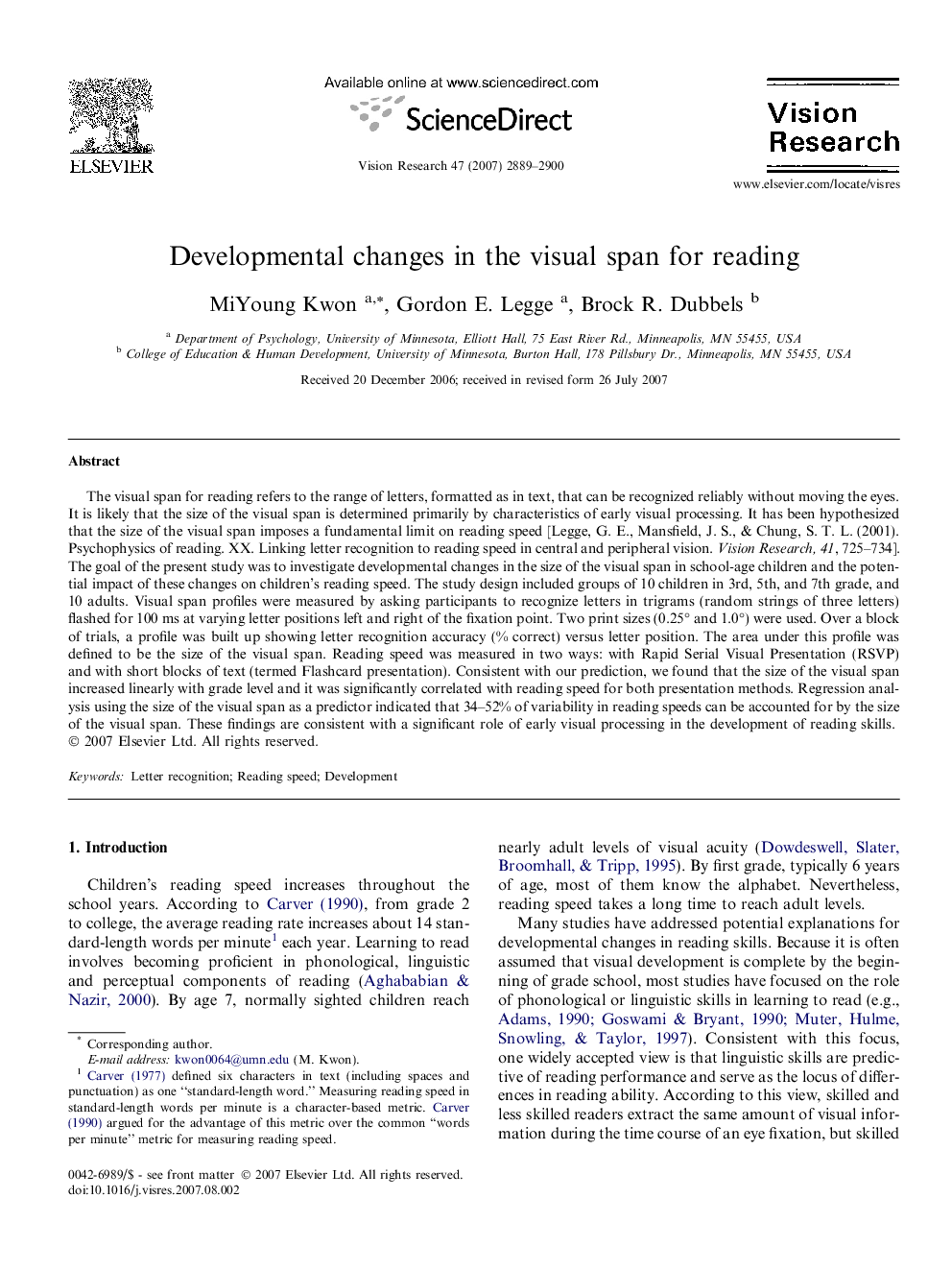| Article ID | Journal | Published Year | Pages | File Type |
|---|---|---|---|---|
| 4035483 | Vision Research | 2007 | 12 Pages |
The visual span for reading refers to the range of letters, formatted as in text, that can be recognized reliably without moving the eyes. It is likely that the size of the visual span is determined primarily by characteristics of early visual processing. It has been hypothesized that the size of the visual span imposes a fundamental limit on reading speed [Legge, G. E., Mansfield, J. S., & Chung, S. T. L. (2001). Psychophysics of reading. XX. Linking letter recognition to reading speed in central and peripheral vision. Vision Research, 41, 725–734]. The goal of the present study was to investigate developmental changes in the size of the visual span in school-age children and the potential impact of these changes on children’s reading speed. The study design included groups of 10 children in 3rd, 5th, and 7th grade, and 10 adults. Visual span profiles were measured by asking participants to recognize letters in trigrams (random strings of three letters) flashed for 100 ms at varying letter positions left and right of the fixation point. Two print sizes (0.25° and 1.0°) were used. Over a block of trials, a profile was built up showing letter recognition accuracy (% correct) versus letter position. The area under this profile was defined to be the size of the visual span. Reading speed was measured in two ways: with Rapid Serial Visual Presentation (RSVP) and with short blocks of text (termed Flashcard presentation). Consistent with our prediction, we found that the size of the visual span increased linearly with grade level and it was significantly correlated with reading speed for both presentation methods. Regression analysis using the size of the visual span as a predictor indicated that 34–52% of variability in reading speeds can be accounted for by the size of the visual span. These findings are consistent with a significant role of early visual processing in the development of reading skills.
